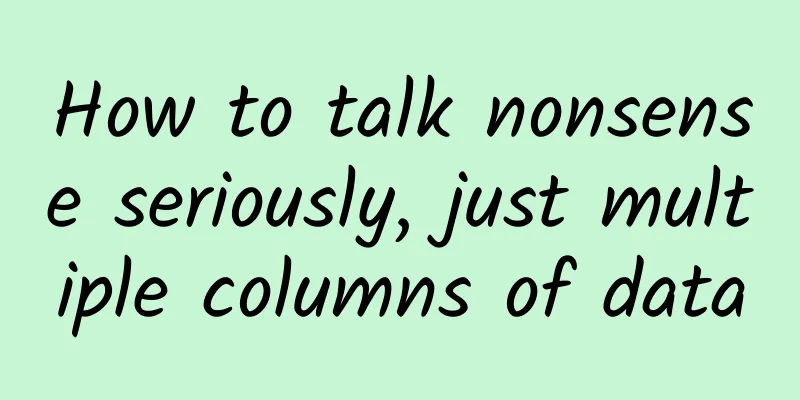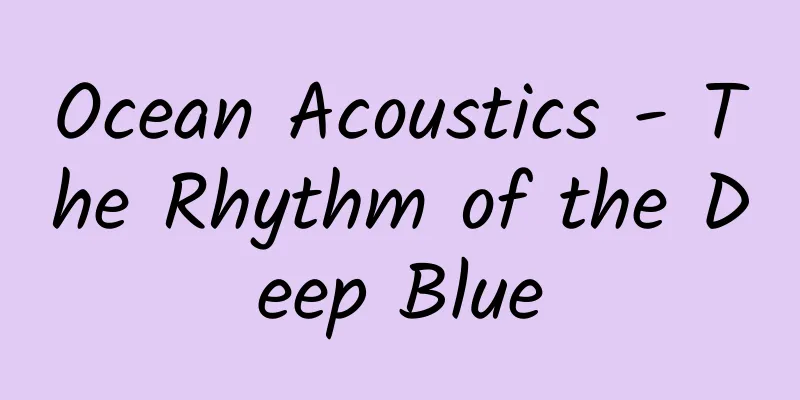How to talk nonsense seriously, just multiple columns of data

|
The morning news said that the consumer price index rose by n points last month; Real-time stock price fluctuations pop up on your phone, and you can also check the annual reports of listed companies to judge the stock prospects; At the regular work meeting, the data PPT template you used made the presentation more beautiful and interesting, and won praise from your boss; … Nowadays, we are surrounded and overwhelmed by all kinds of data every day, every hour, and every moment. Some of this information is just an embellishment of daily life, which can be laughed off; while some of it will become the basis for decision-making and become crucial. We trust data and believe that data is always an objective reflection of objective conditions. But is this really the case? Nonsense visual trick The Big Duck was a duck-shaped store built by a duck farmer in 1931 and has become a beloved landmark. The Big Duck, located in Flanders, Long Island, New York, USA But as a building, the duck has no particular function. In architectural theory, it has become a symbol of the priority of form over function, and "duck" has become a synonym for buildings where decoration outweighs purpose. Similarly, a graph where the form is larger than the data is called a "duck". USA Today is one of the pioneers of creating data visualization "ducks". The above picture is obviously representative of the style of USA Today. The designer of the graphic below used the tines of two forks to represent the bars in the bar graph. What are the downsides to doing this? There are many downsides: The bars are the information-carrying part of a graph, but they take up only a small portion of the space in this picture; The tilted angle can also be controversial because we are not used to interpreting bar graphs at this angle; The two forks are placed side by side, but the horizontal lines of their bottoms are not aligned, which can easily create an illusion; Fortunately, the values are written out. But if you must rely on values to interpret the graph, why not just use a table to avoid the first three disadvantages? We say bullshit is a blatant disregard for facts and logical coherence, an attempt to persuade or impress an audience through distraction, shock, or intimidation. But what's wrong with being cute? In fact, the reason why "Duck" really worries us is that trying to be cute makes it more difficult for readers to understand the data it represents, and it gradually becomes bullshit. For example, this picture is creative, but twisting a pie chart into a sheep's horn only makes it more difficult for readers to make visual comparisons of these quantities. If the “duck” of data visualization is just the shadow of bullshit, then the kind of data visualization we call the “glass slipper” is perfect bullshit. The “glass slipper” is a way of forcing one type of data onto a visual form that is meant to present another type of data. The goal is to use the authority of a good visualization to assert one’s authority, regardless of the compatibility of the data with the form. Just like in the original Grimm Brothers’ version of Cinderella, the stepsisters cut off their toes and flattened their heels to fit into the glass slipper. One of the most abused forms of this is the subway map, which has even evoked meta-level commentary – “the subway map of the map that uses the subway map as a symbol”. Subway map with subway line map as a symbol of the map Another popular form of chart is the labeled diagram. One of the worst hit areas for this type of chart is PPT. Who hasn’t used a few PPT templates that look rich, interesting, and clear? Or created some cute models yourself, like this unicorn. Yet the labels on the chart make no sense. What do the front limbs have to do with “machine learning” and “visualization”? Why is “R programming” related to the hind legs? Why is the right hind leg unlabeled? Why does the “analytical thinker” in the head refer to a type of person, while the rest of the body refers to skills? … Similar ones include: "Happiness and Pen" "Teacher's Bicycle" Distorted digital black box There is a phenomenon that is closer to pure nonsense - mathematical abuse, and it is not uncommon. Mathiness refers to things that look like mathematical expressions but have nothing to do with mathematics. For example, the trust equation: According to this equation, when self-interest is at its lowest, trust is very high, so should we decide everything based on the result of a coin toss? After all, the coin is real and reliable and not selfish. Another example is the formula for the saddest day of the year (the third Monday in January): W stands for weather, d for debt, T for time since Christmas, Q for time since giving up on your New Year’s resolution, M for lack of motivation, and Na for the need to take action. (It’s unclear what D stands for in the formula.) This looks like a very rigorous mathematical method! But what does it mean? How are these quantities measured and in what units? If you just want to express whether there is a positive or negative correlation, then you don’t need to use this form. It is not only useless, but also confusing. To expose bullshit, you need some skills The ultimate goal of identifying possible nonsense is to denounce it. However, the cost of eliminating nonsense is much higher than creating it, even for papers that truly conform to scientific research methodology. Bergstrom and West used a wonderful refutation case to prove the shielding and danger of this "high-end nonsense". They named this method "Unforgettable Refutation". So a poster titled "Studying Human Neural Activity from Dead Atlantic Salmon: On the Importance of Correcting for Multiple Comparisons" was published. You read that right: a dead salmon. It was a deliberately stupid experiment. The researchers talked to the dead fish and showed it pictures of people in various social situations. The results were shocking. When the salmon were asked about people's emotions, the images showed that several areas of its brain stem showed more activity than when it was "resting." And that’s just the “reaction” to human social scenarios; imagine how bright these areas would be if this salmon were asked about salmon emotions. Either we have made a surprising discovery about dead fish cognition, or there is something wrong with our uncorrected statistical methods. Calling out bullshit isn’t just a self-esteem boost; it’s a moral imperative. As we said at the outset, the world is full of bullshit of all kinds, some of it harmless, some of it a minor annoyance, some of it even funny, but much of it can have serious consequences for the integrity of science and for life-and-death decisions. "Data is the new bullshit." But we never deny that science is a successful standard approach to understanding the physical world. No matter what we complain about, no matter what biases we find, no matter what problems we encounter, no matter what nonsense we say, science will eventually succeed. In 2018, Fudan University opened a new general education course, inviting professors from multiple majors in the school to conduct "authenticity verification" of information that students may come into contact with every day and to explain to students what "pseudoscience" is. The course was fully booked as soon as it started. This new course named "Seemingly True" is not the first of its kind at Fudan University. It was inspired by the open course "Calling Bullshit" at the University of Washington. This course is co-taught by Carl Bergstrom, professor of biology, and Jevon West, associate professor of information science. They reveal how data pseudoscience is generated and spread from the perspective of logic and communication channels. The course was sold out as soon as the information was posted on the official website. The two courses are so popular because: identifying data traps has become a necessity in contemporary life. Data information can really be manipulated by "pseudoscience", and although we can already identify the old-fashioned nonsense dressed in the guise of "Shock!", the new subspecies they have split off are dazzling. Bergstrom and West call these tricks "bullshit," and the course, which teaches people how to identify and denounce bullshit, has been widely acclaimed. END Editor/Xiao Xitushuo Source: Tadpole Musical Notation |
<<: "We must have a very good plane." He devoted his entire life to the J-10!
>>: What is the difference between confirmed and asymptomatic infection?
Recommend
How do Guangzhou merchants make profits through mini programs? How can individuals make profits by developing WeChat mini-programs?
WeChat mini programs are business opportunities i...
The sunrise god in the dung ball: Can dung beetles really come back to life?
Scarabs usually refer to the sacred dung beetle (...
How big a fuss is needed to carry out an archaeological "Haidilao"?
Review expert: Cai Dawei, Professor of the School...
If mobile phone chips are free, it must be Xiaomi's doing
Although Xiaomi has not launched any new products...
Behind the five daily limit increases of Baofeng Technology: Which funds are "going against the wind"?
Baofeng Technology (300431.SZ), which was labeled...
How many flowers and trees related to dad do you know?
When it comes to Mother's Day, people will th...
How to do Douyin SEO? How does Tik Tok attract traffic?
There are more and more topics about Tik Tok mark...
Plant Doctor - Parasitic Wasp
In the process of forestry and agricultural produ...
Promotion: Price anchor points in second-category e-commerce advertising!
Price anchor is a marketing method that we often ...
Why I don’t support the “Red Envelope Photo” campaign launched by WeChat!
Product Positioning Activity introduction: The pr...
Complete template for advertising planning!
Today I will share with you how to plan the place...
How to operate an event well? Share two major tips!
Let’s talk about event operation today. Event ope...
How much does it cost to attract investment in the Bengbu Tea Mini Program? What is the investment price of Bengbu Tea Mini Program?
The overall investment promotion of Bengbu Tea Mi...
Douyin short video APP competitive product analysis report!
background: As a new product manager of Tencent&#...
The poisonous C position debuts in the mammal world! Platypus: I am a professional at stabbing people
Ding ding ding ~ Fantastic beasts are coming! Tad...









![[Tencent Bugly Tips] Canvas Particle Engine Hands-on Tutorial to Impress Leaders and Users](/upload/images/67ebddef9ab9e.webp)